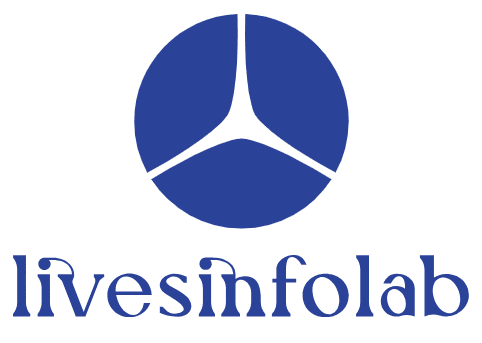Introduction
Structured finance law governs the structuring and regulation of complex financings asset backed securities, CDOs, and similar deals executed through bankruptcy‑remote SPVs. Practitioners blend corporate, securities, and trust rules to shield asset pools from originator liabilities and protect investors. The framework sets disclosure, risk‑retention, and due‑diligence standards, allowing issuers to turn cash flows from mortgages to credit‑card receivables into marketable securities while sustaining transparency and confidence in global capital markets

1. Foundations of Trust Agreements
Trust agreements set true‑sale terms, moving assets into SPVs and insulating them from originator creditors. Detailed provisions cover servicer duties, payment‑waterfall priorities, and protocols for asset substitution. Via Structured Finance Law, trustees hold collateral and enforce contract rights on behalf of investors, ensuring timely distributions. Robust trust agreements require reporting, enabling stakeholders to track metrics and initiate remedies when defaults or breaches arise.
2. Regulatory Framework and Oversight
Structured Finance Law relies on statutes and guidance from securities regulators, banking supervisors, and accounting standard setters. Structured Finance Law requires issuers to register offerings, file prospectuses, and comply with ongoing reporting obligations under securities laws. Additional regulations enforce risk retention, mandating that sponsors maintain a stake in securitized assets to align incentives. Accounting standards often demand consolidation tests to verify that SPVs qualify as bankruptcy‑remote. Regulators periodically audit trust agreements and disclosures to verify legal compliance, asset quality, and risk accuracy.
3. Governance Structures within Special Purpose Vehicles
Effective governance within SPVs is crucial to prevent conflicts of interest and safeguard investor interests. In Structured Finance Law, governance structures establish how trustees, servicers, and certificateholders interact to oversee asset pools. Governing documents define decision‑making processes for amending trust agreements, replacing underperforming assets, and executing enforcement actions when triggers are met. Under Finance Law, trustees act as independent fiduciaries reviewing compliance statements, maintaining loan registers, and resolving disputes. Governance frameworks often appoint advisory committees or rating‑agency liaisons to provide oversight on key metrics, thereby enhancing transparency and bolstering confidence in structured products.
4. Role of Trustees and Enforcement Mechanisms
Trustees occupy a central role in structured finance, acting as impartial custodians to uphold contract terms. Structured Finance Law empowers trustees to monitor asset performance, enforce the payment waterfall, and initiate legal remedies such as asset liquidation or foreclosure when servicers default on obligations. Trustees review periodic servicer certificates, ensure compliance with trust covenants, and maintain communication with investors. When a predefined trigger event occurs, Structured Finance Law allows trustees to invoke their enforcement powers swiftly, minimizing potential losses. This rigorous oversight framework ensures that structured transactions remain aligned with their original economic design and provides investors with clear legal recourse.
5. Technological Innovations and Market Trends
Emerging technologies are reshaping how structured products are managed, marketed, and serviced. In Structured Finance Law, legal frameworks now account for digital signatures, secure data repositories, and algorithm‑driven reporting. Some issuers integrate robo‑advisors to automate credit analysis and optimize portfolio allocations within ABS transactions. Trust agreements must evolve under Structured Finance Law to address cybersecurity protocols and data‑privacy requirements. Blockchain pilots promise to streamline asset transfers and enhance auditability, but they also introduce new legal questions around jurisdiction, smart‑contract enforceability, and regulatory compliance. As the market embraces these innovations, Structured Finance Law will continue adapting to balance efficiency gains with investor protection.
6. Industry Applications and Future Directions

Structured finance transactions span diverse sectors real estate, consumer lending, renewable energy, and telecommunications. Specialized deals under Structured Finance Law can even involve receivables securitized by a mobile carrier, enabling telecom operators to monetize subscription fees and device lease streams. Across industries, tailored trust agreements adjust governance clauses to reflect unique collateral characteristics and performance metrics. Looking forward, Structured Finance Law will likely incorporate environmental, social, and governance (ESG) criteria within transaction covenants, aligning securitizations with sustainable finance goals. Legal practitioners must stay attuned to evolving global standards, ensuring that governance models and disclosure practices continue to protect stakeholders in an increasingly interconnected market.
Conclusion
A thorough understanding of trust agreements and governance mechanisms is essential for anyone navigating the world of structured finance. By mastering the principles outlined in Structured Finance Law, issuers and investors alike can structure robust transactions, satisfy regulatory requirements, and manage risks effectively. As technological advances and cross‑industry applications expand the scope of securitization, legal frameworks will continue to evolve underscoring the importance of agile, well‑governed structures. Armed with this guide, practitioners are better prepared to draft comprehensive trust agreements, enforce governance protocols, and adapt to the dynamic landscape of modern financial engineering.
